Santa Fe Trail

Brief Synopsis
Cast & Crew
Michael Curtiz
Errol Flynn
Olivia De Havilland
Raymond Massey
Ronald Reagan
Alan Hale
Film Details
Technical Specs

Synopsis
At the West Point Academy in 1854, cadet Carl Rader, a disciple of the fanatic John Brown, is dishonorably discharged for conspiracy. His classmates, Jeb Stuart and George Custer, graduate and are assigned to duty at Fort Leavenworth, Kansas, the most dangerous post in the army. On the way to Kansas, Custer and Stuart meet Cyrus Halliday, the man in charge of building the railroad to Santa Fe, and his daughter Kit Carson, with whom both soldiers fall in love. Arriving at the fort, they find the state bloodstained and war-torn, a victim of John Brown's relentless crusade against slavery. Meanwhile, Rader has enlisted as a mercenary in Brown's army, which has been terrorizing the countryside with their bloody raids. During Brown's raid on a freight wagon under the protection of the U.S. Army, Stuart and Custer capture Brown's injured son Jason, and before dying, the troubled boy informs them about his father's hideout at Shubel Morgan's ranch in Palmyra. In disguise, Stuart rides into Palmyra, the center of the underground slave railroad, but is recognized by Rader, who takes him at gunpoint to Brown. While trying to escape, Stuart is trapped in a burning barn but is saved as Custer leads the troops to the rescue and drives Brown into seclusion. Believing that Brown's force has been broken, Stuart and Custer are sent back to Washington, where Stuart proposes to Kit. However, far from being a broken man, Brown is planning to ignite war by raiding the arsenal at Harper's Ferry. When Brown refuses to pay Rader for his services, Rader rides to Washington to inform Stuart of Brown's plans, and the troops arrive just in time to crush the rebellion and hang Brown.

Director

Michael Curtiz
Cast

Errol Flynn

Olivia De Havilland
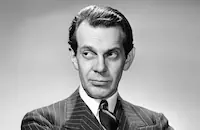
Raymond Massey
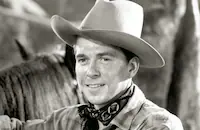
Ronald Reagan

Alan Hale

William Lundigan

Van Heflin

Gene Reynolds

Henry O'neill

Guinn "big Boy" Williams

Alan Baxter

John Litel

Moroni Olsen
David Bruce
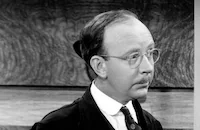
Hobart Cavanaugh
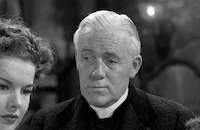
Charles D. Brown
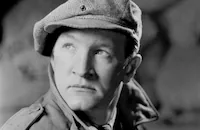
Joe Sawyer
Frank Wilcox

Ward Bond
Russell Simpson
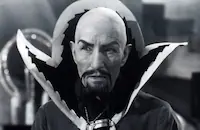
Charles Middleton
Erville Alderson
Spencer Charters
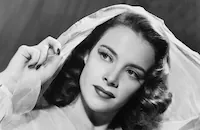
Suzanne Carnahan
William Marshall
George Haywood

Wilfred Lucas

Russell Hicks
Napoleon Simpson
Cliff Clark
Harry Strang

Emmett Vogan
Selmer Jackson

Joseph Crehan
De Wolfe Hopper
Clinton Rosemond
Ernest Whitman
Bernice Pilot
Mildred Gover
Libby Taylor
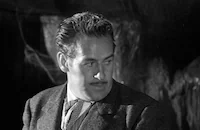
Roy Barcroft
Frank Mayo

Louis Jean Heydt

Grace Stafford
Lane Chandler
Richard Kipling

Jack Mower
Trevor Bardette

Nestor Paiva
Georgia Caine
Arthur Aylsworth
Walter Soderling
Henry Hall
Theresa Harris
Jess Lee Brooks

Maris Wrixon

Lucia Carroll

Mildred Coles
Eddy Chandler
Ed Cobb
Ed Peil
Edward Hearn
Victor Kilian
Creighton Hale

Addison Richards
Lafe Mckee
Reverend Neal Dodd
Alec Proper
John Meyer

Harry Cording
Mira Mckinney
James Farley
Alan Bridge
Eddy Waller
Crew
George Amy
Milo Anderson
Robert Buckner
Robert Fellows
Leo F. Forbstein
Hugo Friedhofer
Jo Graham
Byron Haskin
John Hughes
H. F. Koenekamp
Robert B. Lee
Frank Mattison
Sol Polito
Max Steiner
Jack Sullivan
Jack L. Warner
Perc Westmore

Videos
Movie Clip



Trailer
Hosted Intro
Film Details
Technical Specs

Articles
Santa Fe Trail
De Havilland and Flynn were at the peak of their careers in Santa Fe Trail, but so was the rest of the cast and crew. You can sense the fun they all had making what is essentially a Western fantasy (Hollywood always played fast and loose with the facts), directed by studio favorite Michael Curtiz and photographed by the ever reliable Sol Polito. Despite that, things may have seemed a bit ominous at first for some cast members like Ronald Reagan. The future President found himself cast in the movie at the last minute as George Armstrong Custer, partly due to his success as the "Gipper" in Knute Rockne, All American (1940). When he showed up to see the wardrobe man on the first day of shooting, Reagan saw him toss aside uniforms designed for Wayne Morris (who was originally cast as Custer) and cart in costumes hurriedly sewed together for Reagan's use. As the worried actor recalled in his biography, Where's the Rest of Me?: The Ronald Reagan Story, co-written with Richard Hubler, "It occurred to me then that it would be just as easy someday to throw my clothes in the corner and hang some other actor's in their place. It's a highly competitive business."
In Warner Brothers' recreation of a famous chapter in American history, the film's heroes - all recent graduates of West Point and future leaders of both the Union and Confederate armies - head out along the Santa Fe Trail but soon take a detour off that important caravan route from Missouri to New Mexico. Instead, Santa Fe Trail concentrates on the conflict between the Army and the abolitionist John Brown. In reality, no one but Flynn's character, J.E.B. Stuart, graduated from the Point in 1854, the year given in the film, but all of the others did graduate from there at different times, and in fact, Robert E. Lee was in charge of the troops at the Point and of the attack at Harper's Ferry to capture Brown. That raid is a reasonable facsimile of the real attack and Raymond Massey's masterful performance captures the almost insane religious zealotry of John Brown.
Sitting squarely in the middle the fence, refusing to side with either the South or the North, screenwriter Robert Buckner tries very hard to simplify matters as illustrated by the following dialogue delivered by J.E.B Stuart (Flynn) when he is asked about the dilemma between slavery and insurrection: "Our job is to be a soldier, not to decide what is wrong or right." There are other statements by De Havilland's character, Kit Carson Holliday, warning against the rift between slavers and anti-slavery people, and the inhumanity of it all. But there are almost equal arguments for a slow progression towards freedom and a conservative eradication of slavery in the South. So, although the film may be politically murky and somewhat confused historically, it never falters as an entertainment.
Among the stellar supporting cast of Santa Fe Trail are Alan Hale, Guinn "Big Boy" Williams, William Lundigan, Ward Bond, and Van Heflin, some of them rising stars and others destined to become household names among television viewers (Ward Bond became the star of TV's popular Wagon Train series, 1957-1961). But perhaps there is no success story amongst them as poignant as Errol Flynn's rise and fall. Reaching his peak in the mid to late forties he soon turned to a debauched life full of drugs and booze, often wandering off aimlessly for long stretches aboard his sailboat, the "Zaca." Eventually, he returned to the screen, specializing in drunks; after all, he played them so well, particularly in The Sun Also Rises (1957) and Too Much, Too Soon (1958), in which he played his late friend John Barrymore, also a notorious alcoholic. His final stab at fame was his autobiography, My Wicked Wicked Ways, published posthumously in 1959, the year that he died. The dashing, adored athlete and leading man was found dead of a heart attack at the age of 50. It was often said that Flynn's coroner thought he was examining the body of a much older man. Olivia de Havilland later recalled in The Films of Olivia de Havilland by Tony Thomas that she first met Flynn when they were testing together for Captain Blood (1935). She asked him what he wanted most in life. "Success" is what he answered. De Havilland felt that it was this fervent pursuit of success that compromised Flynn and caused him to - as Thomas puts it - "Étrod a path that eventually led to veritable self-destruction."
Producer: Robert M. Fellows, Jack L. Warner
Director: Michael Curtiz
Screenplay: Robert Buckner
Art Direction: John Hughes
Cinematography: Sol Polito
Costume Design: Milo Anderson
Film Editing: George J. Amy
Original Music: Max Steiner
Principal Cast: Errol Flynn (Jeb Stuart), Olivia de Havilland (Kit Carson Holliday), Raymond Massey (John Brown), Ronald Reagan (George Armstrong Custer), Alan Hale (Tex Bell), William Lundigan (Bob Holliday), Van Heflin (Carl Rader), Gene Reynolds (Jason Brown), Guinn "Big Boy" Williams (Windy Brody), Alan Baxter (Oliver Brown), Ward Bond (Townley).
BW-110m. Closed captioning. Descriptive video.
by Joseph D'Onofrio

Santa Fe Trail
Ronald Reagan, 1911-2004 - TCM Remembers Ronald Reagan
Ronald Reagan, the actor turned elected official whose fascinating career saw him develop as a contract player for Warner Brothers studios, to a politician who fulfilled his ambitions by becoming the 40th President of the United States, died at his home in Los Angeles on June 5 after a long battle with Alzheimer's disease. He was 93.
He was born Ronald Wilson Reagan on February 6, 1911 in Tampico, Illinois to John and Nelle Reagan. When Reagan was nine, his family settled down in the small community of Dixon, about 100 miles west of Chicago. After high school, Reagan enrolled in Eureka College, a small Christian school near Peoria. He graduated in 1932 with a degree in Economics, and pursued a career in broadcasting. His first gig was as a part-time announcer at WOC in Davenport, Iowa. Within a year, WOC had merged with its big-sister station, WHO in Des Moines, and Reagan was hired as a sports announcer.
In the spring of 1937, Reagan drove to Southern California to catch the Chicago Cubs in spring training on Santa Catalina Island. While he was in California, he wrangled a screen test and signed a contract for $200 a week with Warner Brothers. His film debut was rather inauspicious; he portrayed a radio announcer in an innocuous comedy Love is on the Air (1937). He made a few more "B" programmers like Hollywood Hotel (also 1937), and Girls on Probation (1938), before getting his first prominent role opposite Bette Davis in the popular tearjerker, Dark Victory (1939).
Although he seldom got credit for being a good actor, there was no denying that Reagan held his own given the right material: Knute Rockne, All American as the doomed Notre Dame football hero George "The Gipper" Gipp, where he delivered the film's immortal line "Win one for the Gipper!"; Santa Fe Trail in which he ably supports Errol Flynn in one of the boxoffice hits of its era (both 1940); Kings Row (1941), featuring one of his finest performances as a small-town playboy whose legs are amputated by a careless surgeon; and Desperate Journey (1942) where he again supported Flynn in an exciting action picture.
Due to his poor eyesight, Reagan didn't see any action in World War II, so the studio heads assigned him to star in a series of patriotic films produced by the First Motion Picture Unit of the Army Air Forces in Culver City. Between 1942-45, Reagan starred in over 400 of these films. After the war, Reagan still found some good roles: The Voice of the Turtle (1947) proved he had a deft hand at light comedy opposite Eleanor Parker; The Hasty Heart (1949) offered another underrated performance as he ably portrayed the Yank in John Patrick's much heralded wartime play; and Storm Warning (1950) was a slick melodrama that cast Reagan as a crusading District Attorney determined to bring the KKK in a small southern town, with the help of Doris Day and Ginger Rogers!
It was around this time that Reagan became involved in politics. In 1947, he began a five-year term as president of the Screen Actors Guild (SAG), and testified in October of that year before the newly formed House Un-American Activities Committee (HUAC). He identified suspected Communists Larry Parks, Howard Da Silva and Alexander Knox, all of whom were subsequently called to testify, and subsequently blacklisted. Later records showed Reagan was so concerned about the Communist influence in Hollywood, that he became an FBI informer.
As Reagan became steeped in his political career, his parts throughout the '50s became inferior: the notorious Bedtime for Bonzo (1951); the coy "sex" comedy She's Working Her Way Through College (1952) that cast him as a college professor who romances a stripper! (Virginia Mayo); Cattle Queen of Montana (1955), a sluggish Western that even the redoubtable Barbara Stanwyck couldn't save; and finally Hellcats of the Navy (1957), a stodgy war picture that would be his only film that co-starred his wife Nancy (Davis).
Television offered some salvation. For eight years, (1954-62), Reagan served as the host of General Electric Theater, a televised series of dramas. He also found a niche as GE's goodwill ambassador to employees and to civic and business groups around the country, furthering his taste and honing his craft as a public official. By the mid '60s, Reagan would move into politics entirely, save for one last film, the thrilling The Killers (1964), Reagan's only known villainous role, as a murderous gangster. That same year, he actively campaigned for Republican Presidential candidate Barry Goldwater, although Goldwater lost to Lyndon B. Johnson.
Reagan whose profile was riding high, had cemented his future as a successful politician. In 1966, he ran against incumbent Governor Pat Brown for the state of California and won, serving successfully for two terms until 1974.
Reagan began an all-out, two-year drive to wrest the 1976 nomination from incumbent Gerald R. Ford, an appointed vice president who became president on the resignation of Nixon. Reagan fell short by a handful of delegates to the Republican national convention. But Ford lost to Jimmy Carter, and Reagan became the front-runner to challenge Carter in 1980. After defeating Carter, Reagan held two terms as President of the United States (1981-89). After his second term was over, he retired quietly in California. In 1994, it was revealed to the media that Reagan was suffering from Alzheimer's disease; he had been kept out of the public eye since then.
He was married briefly to actress Jane Wyman (1940-48), and had two children; a daughter Maureen and an adopted son, Michael. In 1952, he married a budding film starlet, Nancy Davis, who bore him two more children; a daughter, Patty; and a son, Ronald Jr. Ronald Reagan is survived by Nancy, Michael, Patty and Ron Jr. His daughter Maureen died of Melanoma in 2001 at the age of 60.
by Michael T. Toole
Ronald Reagan, 1911-2004 - TCM Remembers Ronald Reagan
Quotes
I, John Brown, am now certain that the crimes of this great land will never be purged except with blood!...Aye, let them hang me. I forgive them, and may God forgive them for they know not what they do!- John Brown
Trivia
Raymond Massey starred as John Brown again in Seven Angry Men (1955), the main story of which is also the trial and hanging of the abolitionist.
Notes
The working title of this film was Diary of the Santa Fe. According to a news item in Hollywood Reporter, it was planned as a follow-up to the success of Dodge City which also starred Errol Flynn and Olivia de Havilland. Other news items in Hollywood Reporter note that this picture was part of a trend towards big-budget big-name Westerns. The trend was spurred by the success of Fox's 1939 film Jesse James and the Warner Bros. 1939 film Dodge City and their 1940 film Virginia City. A news item in Hollywood Reporter adds that the film was shot on location around Santa Fe, NM.

Miscellaneous Notes
Released in United States 1940
Released in United States 1940















